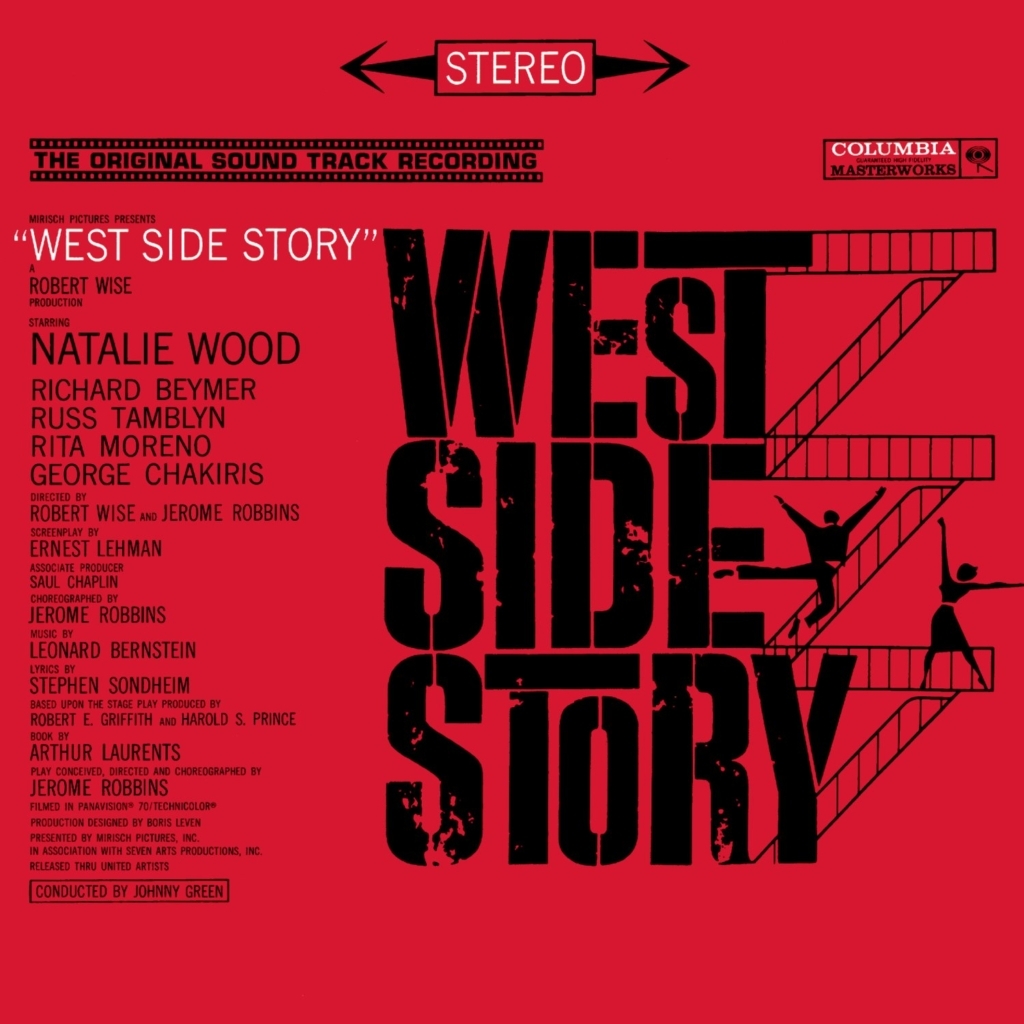Columbia 2070
Conductor: Johnny Green
Track listing: Prologue / Jet Song / Something’s Coming / Dance at the Gym / Maria / America / Tonight / Gee, Officer Krupke / I Feel Pretty / One Hand, One Heart / Quintet / The Rumble / Somewhere / Cool / A Boy Like That, I Have a Love

May 5, 1962
54 weeks (nonconsecutive): 53 weeks stereo, 12 weeks mono
When the original cast album of West Side Story was released in March 1958, it didn’t set the world on fire. “Unlike most shows, it did not sell a lot of albums right away,” says lyricist Stephen Sondheim. “Over a period of years it remained steady, whereas most show albums have an immediate peak and then an immediate falloff. West Side Story never really had a peak, because West Side Story wasn’t a big hit. It just made its money back and a little profit and it received mixed reviews and mixed audience reaction, but the film was the huge hit.” Sharing the success of the film was the soundtrack album.
The music of West Side Story first began to take shape in the fall of 1955 and was completed by the summer of 1957. The project teamed the relatively young and up-and-coming Sondheim with the veteran composer Leonard Bernstein. “He liked to work together and I liked to work separately,” Sondheim says. “When I first came onto the project, he had written the main theme of ‘Maria’ and ‘Cool,’ but otherwise we did everything together.” During a six-month break in the project, Bernstein went off to work on Candide. “A number of songs in West Side Story were discards from Candide,” says Sondheim. “And, a number of discards from West Side Story showed up in the 1956 production of Candide.”
Bernstein and Sondheim would usually talk on the phone, write separately for two days, and then meet on the third day. The joint writing sessions were held at Bernstein’s residence—the Osborne, at 205 West 57th Street. “He had a 10-room apartment, but the room he chose for his study was the least attractive room. It looked out onto an airshaft. It was about 15 feet square, had minimal lighting, a bar, a piano, a sofa, and bookshelves with a lot of scores. Lenny believed in working in a sort of a monk-like atmosphere without visual and aural distractions.”
What Bernstein and Sondheim accomplished in that small room wasn’t truly appreciated until the release of the West Side Story soundtrack, which included the voices of Marni Nixon as Maria, Jim Bryan as Tony, and Betty Wand as Anita. Russ Tamblyn, who portrayed Riff, was the only lead actor in the film that contributed his own singing to the soundtrack.
In its 28th week on the chart, the West Side Story soundtrack hit the summit of the 150 Best Selling Monaural LP’s chart. The same week, the original cast album reached its peak at number five in its 82nd week on the chart. Yet the legacy of West Side Story didn’t end there. The album spent a total of 54 weeks at the top of one of Billboard‘s album charts (53 weeks on the stereo chart, and 12 on the mono) making it the album with the most weeks at Number One in the rock era.
Although Sondheim doesn’t feel that West Side Story translated well to big screen, it did bring the musical to the masses. “What was wonderful about the film was that it introduced the piece to many thousands of people who never had a chance to see the show,” he says.
The success of the soundtrack was sweet to Sondheim and Bernstein, whose music initially received a critical beating. “Dinah Shore did ‘Tonight’ and Johnny Mathis did ‘Maria,’ but up until the release of the film, the score was universally pounced on,” Sondheim says. “When the show opened in New York City, they said it’s all very exciting, but you can’t hum anything. Then the movie came out four years later and suddenly everyone could hum everything.”
THE TOP FIVE
Week of May 5, 1962
1. West Side Story, Soundtrack
2. Blue Hawaii, Elvis Presley
3. College Concert, The Kingston Trio
4. Breakfast at Tiffany’s, Henry Mancini
5. Your Twist Party, Chubby Checker
